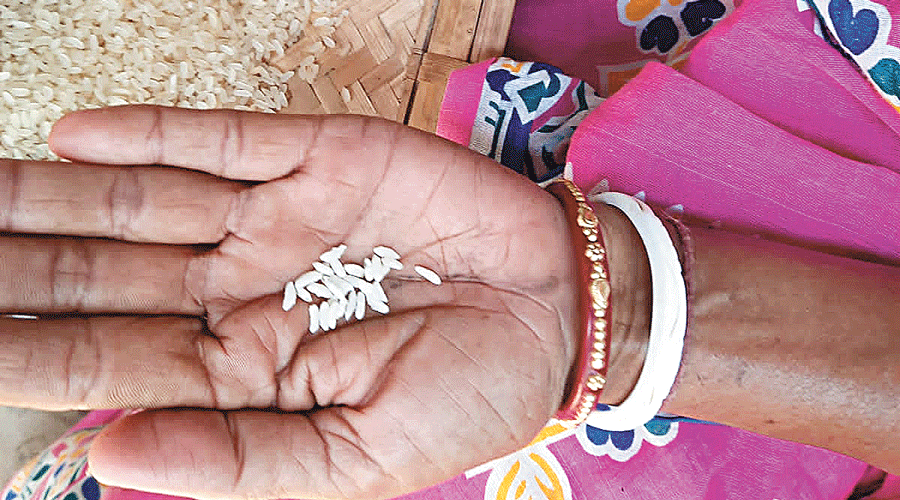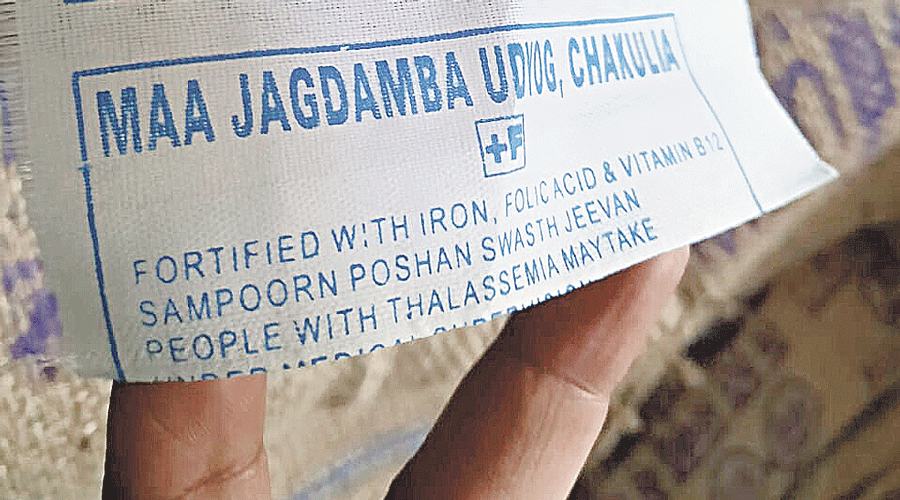A team of health, farming and nutrition experts has asked the Jharkhand government to stop indiscriminate distribution of iron-fortified rice to local communities, saying this central government initiative could have adverse health effects on some people.
The team from the Right-to-Food Campaign and other organisations has expressed concern that the fortified rice intended to address high levels of anaemia might also reach people with blood disorders such as thalassemia and sickle cell anaemia. A significant proportion of the state’s Adivasi population suffers from these blood disorders.
“For populations with these blood disorders, fortified iron is not the answer,” Kavitha Kuruganti, a farm activist with the Alliance for Sustainable and Holistic Agriculture (ASHA), a nationwide non-government farmers’ rights group and a team member, said on Wednesday.
The Food Safety and Standards Authority of India’s regulations on fortified foods ask for mandatory labelling and a statement cautioning people with thalassemia to consume iron-fortified food under medical supervision, she said. The FSSAI also warns that people with sickle cell anaemia should not consume iron-fortified food.

An anganwadi worker picks fortified rice from normal rice. Bhola Prasad
Kuruganti was part of a “fact-finding” team that visited five panchayats in Jharkhand’s Khunti and East Singhbhum districts where they met public distribution system beneficiaries, dealers, community health centre doctors, and cooks in government schools.
The team released a report on Wednesday expressing concern about the indiscriminate distribution of fortified rice to poor households across the state and in government-supported childcare centres and schools, and urging the Jharkhand government to stop the Centre’s “misadventure” with fortified rice.
The team said the central government, through the FSSAI regulations, recognised the health risks of iron-fortified food for people with specific blood disroders, but simultaneously had encouraged the distribution of such rice through food schemes where the poor have no option but to depend on entitlements for their food needs.
Jharkhand lacks a population-based screening programme that would enable people with such blood disorders to learn that they are vulnerable. Yet, the government is distributing the rice without adequate information to or dialogue with the communities, the team said.
A team of 18 experts from health economics, nutrition, paediatrics and public health had last year cautioned against mass distribution of fortified rice saying such an initiative could harm vulnerable sections of population through excess iron intake.
The fortification plan has gained traction since the National Family Health Survey 2019-20 found little change in anaemia since the previous 2015-16 survey, triggering concerns that the existing iron syrup or tablet supplementation programme for children and women has not worked.
Proponents have contended that rice fortification which involves adding vitamins or minerals during the post-harvest phase is a cost-effective strategy to combat micronutrient deficiencies in countries with high per capita rice consumption.
The Union food and public distribution department in 2019-20 initiated a rice with iron fortification scheme that has rolled out in at least six states — Andhra Pradesh, Gujarat, Maharashtra, Tamil Nadu, Chhattisgarh and Uttar Pradesh.
The fact-finding team in Jharkhand said it is “surprising”that the Centre through “a hasty blanket approach” has scaled up distribution of fortified rice to 257 districts across India even though the effects of so-called pilot studies on fortified rice have either not been evaluated or their results are not in the public domain.
Team member Vandana Prasad, a paediatrician and community health specialist, said dietary diversity should be the primary strategy to address micronutrient shortages.
The government should expand its food security basket to include millets, pulses, eggs, cooking oil and milk in its food schemes, the team said.
The fact-finding team included Right to Food Campaign Jharkhand member Balram and James Herenz, Greenpeace India member Rohin Kumar, ASHA-Kisan Swaraj member Soumik Banerjee and Raj Shekhar Singh from Right to Food Campaign National Secretariat.










